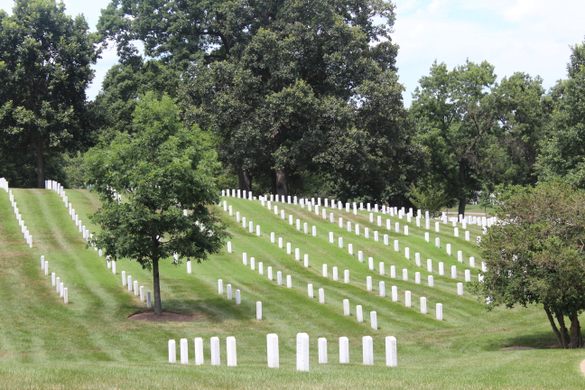The Graves of Robert E. Lee's Garden
Soldiers were buried next to Lee's house in the center of Arlington Cemetery to dissuade the general from reclaiming his property after the war.
Confederate general Robert E. Lee’s former residence now lies in the heart of Arlington Cemetery. However, this wouldn’t be true if it weren’t for the dozens of soldiers buried on the perimeter of the gardens next to the house.
Arlington Cemetery is a must in the Washington, D.C tourism circuit, hosting over 4 million visitors every year. But few have heard of the soldiers buried immediately outside the residence of Robert E. Lee, or know the story of why they came to be interred there.
Before Arlington Cemetery ever existed, it was the plantation of George Washington Park Custis, the grandson of George and Martha Washington. Upon his death, the property passed to his daughter, Mary Custis Lee, the wife of Robert E. Lee. But after Lee resigned from the U.S. Army to lead the Confederate forces, the property was occupied by the Army and later purchased by the U.S government in 1864. As Washington area hospitals overflowed with Civil War casualties, the estate was designated a national cemetery.
After the war, several Union leaders were concerned that Lee would try to reclaim his property and remove the graves and tombs. One of these people, Quartermaster General Montgomery Meigs, decided that the best way to ensure the cemetery’s permanence was to bury soldiers as close to the main house as possible. He got his way in August of 1864, when 26 fallen soldiers were buried by the perimeter of Lee’s rose garden.
This might seem like an extreme measure, but there is proof that the Lees had an interest returning to their estate and dislocating soldiers’ graves in the process. Robert E. Lee’s brother, Smith Lee, is recorded to have said “the house could still be made a pleasant residence, by fencing off the Cemetery, and removing the officers buried around the garden.”
The plan seemed to have worked. Robert E. Lee never returned to his Arlington estate. No one knows if it was because his front lawn became a graveyard or because he had just had enough with the Washington area, but Lee moved to Lexington, Virginia and died five years later. He is buried at Lee Chapel in Lexington, and not in Arlington Cemetery where he once lived.
Know Before You Go
The graves can be seen 365 days a year, from 8 a.m. to 7 p.m. in the summer and up to 5 p.m. through the rest of the year. There are several walking trails within Arlington Cemetery leading to the Lee house, the shortest path taking about ten minutes. Arlington Cemetery has a metro station on the Washington Metro's Blue Line.
Community Contributors
Added by
Edited by
The Atlas Obscura Podcast is Back!


























Follow us on Twitter to get the latest on the world's hidden wonders.
Like us on Facebook to get the latest on the world's hidden wonders.
Follow us on Twitter Like us on Facebook